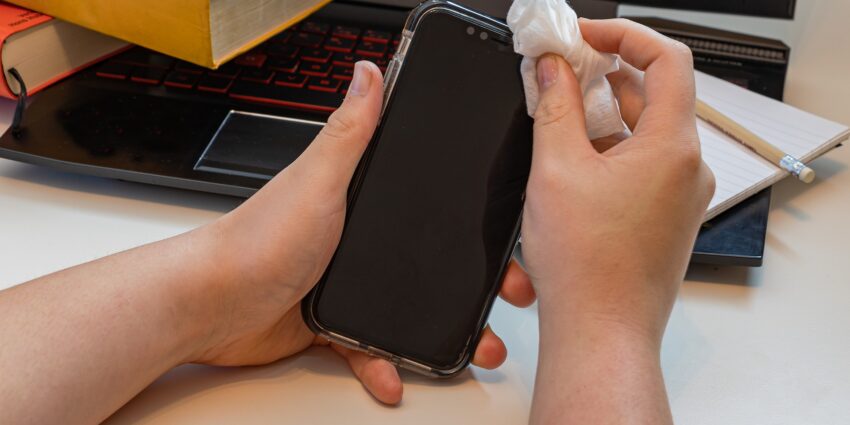Cleaning and Disinfecting Your Household
There is much to learn about the novel coronavirus (SARS-CoV-2) that causes coronavirus disease 2019 (COVID-19). Based on what is currently known about COVID-19, regular cleaning and disinfecting of households and high traffic areas limit the survival of the virus in the environment. The CDC offers a description of terms and the following guidelines for household cleaning.
These guidelines are focused on household settings and are meant for the general public.
- Cleaning refers to the removal of germs, dirt, and impurities from surfaces. It does not kill germs, but by removing them, it lowers their numbers and the risk of spreading infection.
- Disinfecting refers to using chemicals, for example, EPA-registered disinfectants, to kill germs on surfaces. This process does not necessarily clean dirty surfaces or remove germs, but by killing germs on a surface after cleaning, it can further lower the risk of spreading infection.
Everyone’s home is a little different, so think about the surfaces you interact with most. Now that you know what you’re cleaning, here’s how you should do it.
First Clean, Then Disinfect: Clean the surfaces by removing any contaminants, dust, or debris. You can do this by wiping them with soapy water (or a cleaning spray) and a hand towel. Then apply a surface-appropriate disinfectant. The quickest and easiest way to do this is with disinfecting wipes or disinfectant spray.
It is highly recommended before starting you follow all safety protocols, read and follow the directions on the label to ensure safe and effective use. Decide also what you will be cleaning; is it a hard (non-porous) surface or a soft (porous) surface, this factor alone will determine how cleaning and disinfecting the area will be handled.
Cleaning and Disinfecting Safety Protocols
- Wear skin protection and consider eye protection for potential splash hazards
- Ensure adequate ventilation
- Use no more than the amount recommended on the label
- Use water at room temperature for dilution (unless stated otherwise on the label)
- Avoid mixing chemical products
- Label diluted cleaning solutions
- Store and use chemicals out of the reach of children and pets
Now you can start disinfecting the area; you want to go beyond light cleaning. When cleaning your house ensure you’re using strong cleaning products to disinfect the high-touch areas in your home. If it is touched throughout the day, clean it! Once a day may not be enough because no one is sure yet how long these germs can live on specific surfaces. You should sanitize these areas several times each day.
Check the label also to see the manufacture’s guidelines for how long to leave the liquid on the surface to kill the germs before wiping clean. Typically, when using any type of disinfectant, it is important to wait at least 30 seconds to several minutes (check the label for timing) for the product to effectively kill a germ or virus.
Hard (non-porous) Surfaces
When cleaning and disinfecting any area with chemicals ensure you protect your skin by wearing disposable gloves. It is recommended that the gloves be discarded after each cleaning or use. If you are using reusable gloves then, those gloves should be dedicated to cleaning and disinfection of surfaces for COVID-19 and should not be used for other cleaning purposes. Once you have removed the gloves and completed cleaning wash hands immediately after gloves are removed.
Soft (porous) Surfaces
Cleaning soft (porous) surfaces such as carpeted floor, rugs, and drapes, remove visible contamination if present and clean with appropriate cleaners indicated for use on these surfaces. If possible, launder items using the warmest appropriate water setting for the items and dry items completely.
Cleaning and Disinfecting Your Phone
Coronavirus germs can live on our phones, which is why we need to be cleaning them now more than ever. Anyone with an iPhone, Apple recommends using a 70 percent isopropyl alcohol wipe or Clorox Disinfecting Wipes to gently wipe the exterior surfaces of your iPhone. Do not use bleach. Samsung has not commented on whether wipes are a good way to clean your phone. Don’t forget the phone case as this needs to be cleaned with a disinfecting wipe also.
Should You Disinfect Packages and Mail?
Yes, lightly! According to the USPS, mail and packages are relatively low-risk for transmitting the novel coronavirus. Researchers have found that it can live on cardboard for around 24 hours, so giving packages a quick cleaning with a disinfecting wipe is a great idea.
Does Cleaning Your Clothes Remove Germs?
Yes, just by simply washing your clothes with regular laundry soap and drying it at slightly higher temperatures than you might have otherwise is all you have to do to disinfect your clothes. Be sure to disinfect surfaces the dirty laundry comes in contact with, including the hamper and your hands. This is especially important if you have a sick person in the house. In addition, clean and disinfect the hamper like you would any other surface, and wash your hands thoroughly after handling dirty laundry from someone who is ill. The CDC recommends using a liner in your hamper to help.
Keep Washing Your Hands
It’s been repeated countless times, but that’s because it’s true: no matter what you do, the best way to lower your risk of contracting COVID-19 or passing it to someone else is to wash your hands. The CDC recommends a vigorous 20-second scrub with soap and water that extends beyond the hands to the wrists, between the fingers, and under the fingernails.
Building Service Industries offers FREE ESTIMATES call us today to learn more about our services that will make your home healthier and safer in the days and months ahead.

